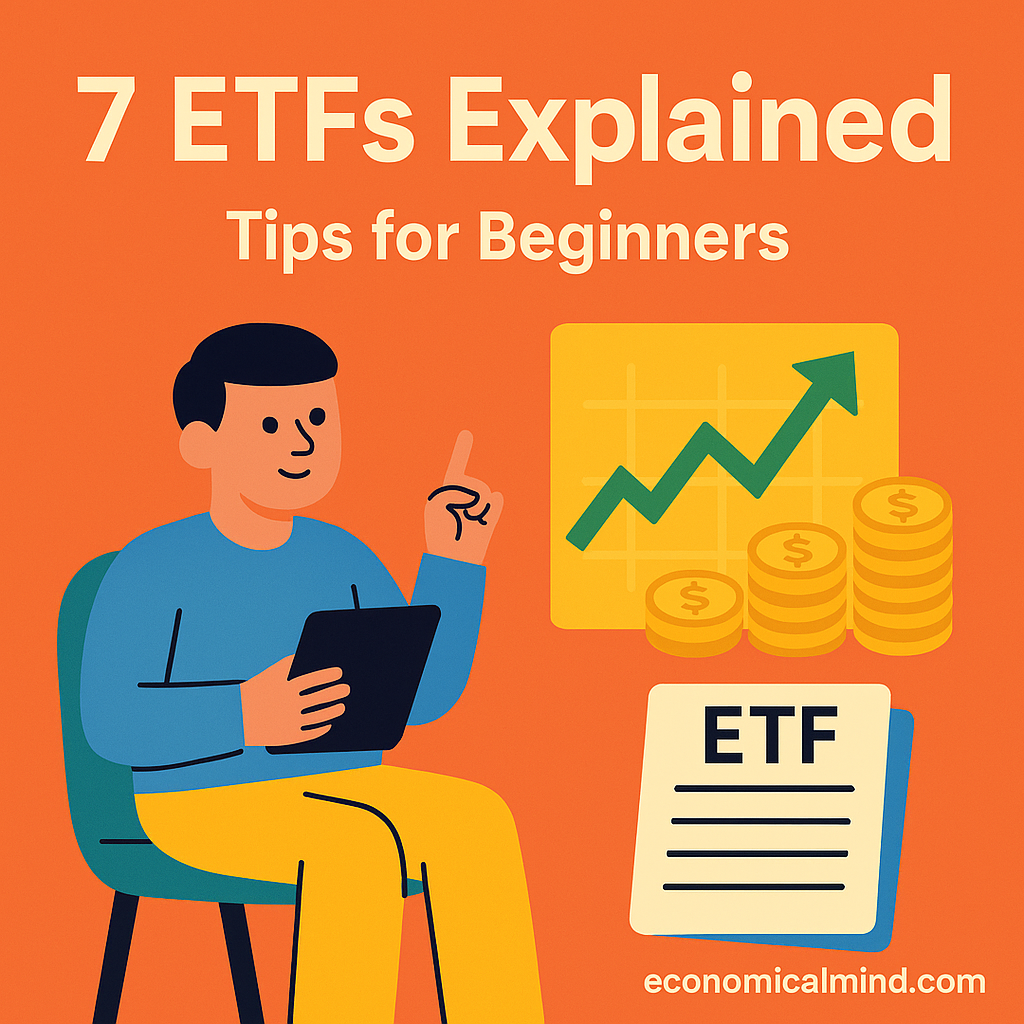
Why ETFs Are Perfect for Beginner Investors
Exchange-Traded Funds — or ETFs — are one of the easiest and most effective ways to start investing. They combine the diversification of mutual funds with the flexibility of individual stocks, making them ideal for beginners.
Whether you’re saving for retirement, building passive income, or just starting your investing journey, ETFs can help you grow wealth safely and efficiently.
1. Understand What an ETF Is
An ETF (Exchange-Traded Fund) is a basket of investments — like stocks, bonds, or commodities — that trades on the stock market just like a single stock.
When you buy one share of an ETF, you’re instantly investing in dozens or even hundreds of companies, spreading your risk automatically.
Example:
The S&P 500 ETF (like VOO or SPY) includes 500 of the largest U.S. companies — from Apple to Amazon — giving you instant diversification.
2. Know the Different Types of ETFs
Not all ETFs are the same. Here are the most common types for beginners:
- Stock ETFs: Track a group of companies (like tech, healthcare, or energy).
- Bond ETFs: Focus on government or corporate bonds for stability.
- Index ETFs: Follow a specific index like the S&P 500 or Nasdaq 100.
- Sector ETFs: Invest in specific industries (like clean energy or AI).
- International ETFs: Provide exposure to markets outside the U.S.
Starting with broad-market ETFs is usually the best choice for beginners.
3. Look at the Expense Ratio
The expense ratio is the annual fee you pay to own the ETF, expressed as a percentage.
For example, an expense ratio of 0.05% means you pay just $5 per year for every $10,000 invested.
Low-cost ETFs — especially from providers like Vanguard, Schwab, and iShares — keep more of your money working for you.
Pro tip: Stick to ETFs with expense ratios under 0.20% whenever possible.
4. Diversify Across Sectors and Regions
Even though ETFs are diversified, it’s smart to hold a mix of ETFs for added balance.
For example:
- 60% U.S. stock ETF (like VTI or SPY)
- 20% international ETF (like VXUS)
- 20% bond ETF (like BND)
This mix gives you exposure to different regions and asset types, protecting you from downturns in any one area.
5. Use Dollar-Cost Averaging
Instead of trying to time the market, invest a fixed amount at regular intervals — say, $100 every month.
This strategy, known as dollar-cost averaging, helps smooth out market volatility. You’ll buy more shares when prices are low and fewer when prices are high, which often results in a better average cost over time.
Apps like Fidelity, Charles Schwab, and M1 Finance make this process automatic.
6. Reinvest Your Dividends
Most ETFs pay dividends — small cash payouts from the companies inside them.
To maximize long-term growth, choose automatic dividend reinvestment. This means every time you receive dividends, they buy more ETF shares for you — compounding your returns without extra effort.
Over years or decades, reinvesting dividends can dramatically increase your wealth.
7. Avoid Emotional Investing
ETFs are built for long-term growth, not quick profits.
The biggest mistake beginners make is selling too early when the market dips. Remember:
- Market drops are temporary.
- Staying invested is how you benefit from recovery.
- Time in the market beats timing the market — every time.
Even a small investment can grow significantly if you stay consistent and patient.
Bonus Tip: Use Tax-Advantaged Accounts
If you’re investing for the long run, hold your ETFs inside tax-advantaged accounts like:
- 401(k) or Traditional IRA (tax-deferred growth)
- Roth IRA (tax-free growth)
This minimizes taxes on dividends and capital gains — helping your investments grow even faster.
Final Thoughts
ETFs are one of the simplest, most beginner-friendly investments available today.
They offer diversification, low costs, and long-term growth — all in one package. Start with broad-market ETFs, invest regularly, reinvest your dividends, and stay the course.
Over time, your ETF portfolio can become the foundation of lasting financial independence.
